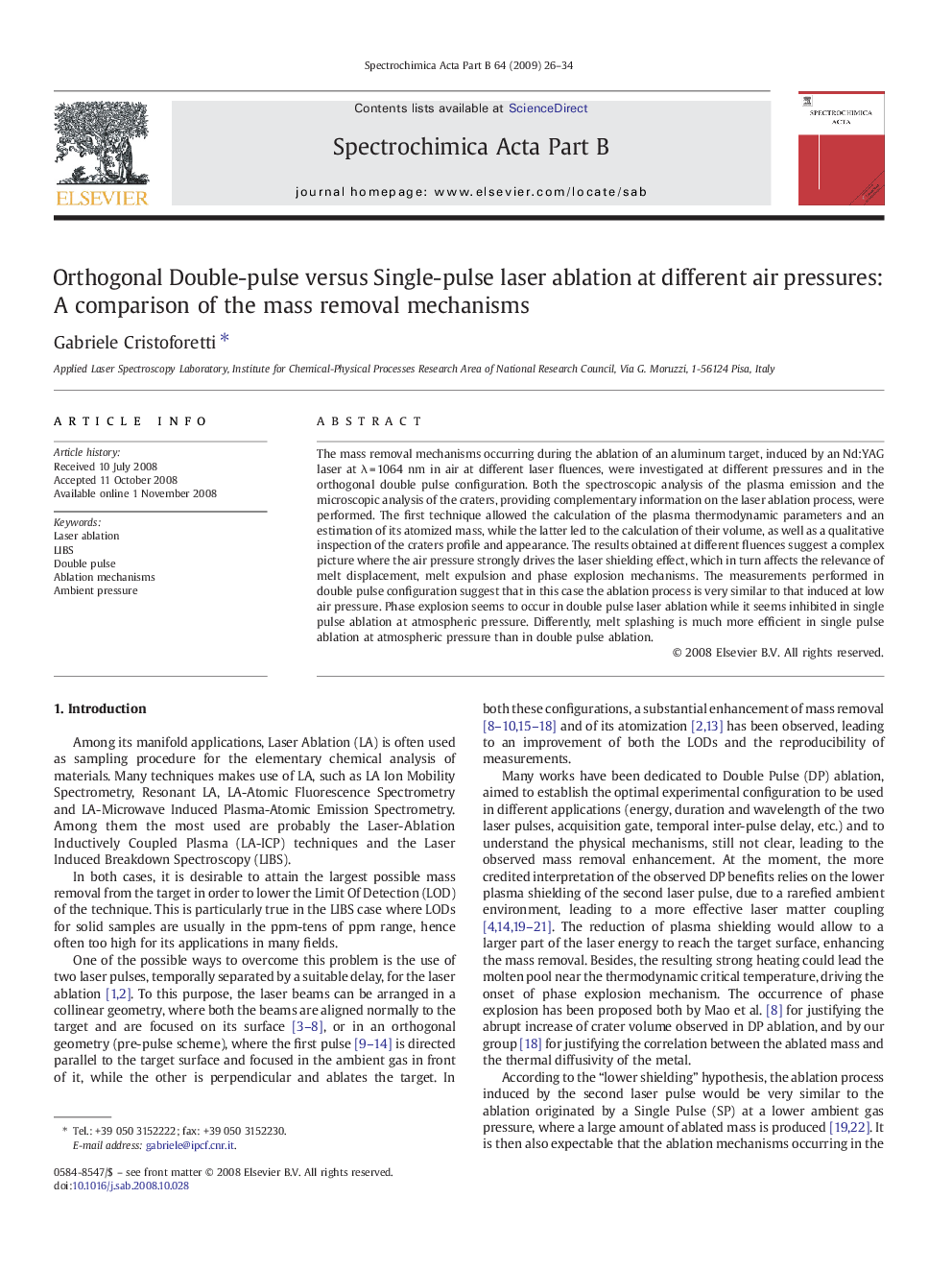| Article ID | Journal | Published Year | Pages | File Type |
|---|---|---|---|---|
| 1240409 | Spectrochimica Acta Part B: Atomic Spectroscopy | 2009 | 9 Pages |
The mass removal mechanisms occurring during the ablation of an aluminum target, induced by an Nd:YAG laser at λ = 1064 nm in air at different laser fluences, were investigated at different pressures and in the orthogonal double pulse configuration. Both the spectroscopic analysis of the plasma emission and the microscopic analysis of the craters, providing complementary information on the laser ablation process, were performed. The first technique allowed the calculation of the plasma thermodynamic parameters and an estimation of its atomized mass, while the latter led to the calculation of their volume, as well as a qualitative inspection of the craters profile and appearance. The results obtained at different fluences suggest a complex picture where the air pressure strongly drives the laser shielding effect, which in turn affects the relevance of melt displacement, melt expulsion and phase explosion mechanisms. The measurements performed in double pulse configuration suggest that in this case the ablation process is very similar to that induced at low air pressure. Phase explosion seems to occur in double pulse laser ablation while it seems inhibited in single pulse ablation at atmospheric pressure. Differently, melt splashing is much more efficient in single pulse ablation at atmospheric pressure than in double pulse ablation.
